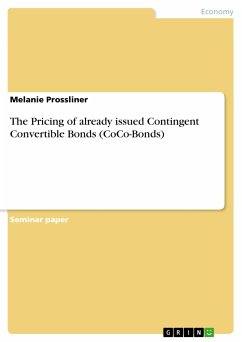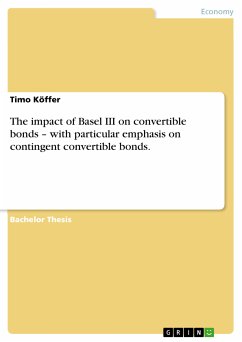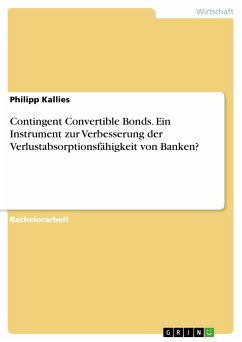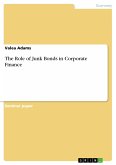Seminar paper from the year 2011 in the subject Business economics - Banking, Stock Exchanges, Insurance, Accounting, grade: 1,2, University of Innsbruck (Banking and Finance), course: Risk Management, language: English, abstract: In the year 2007 one of the biggest financial crisis in worlds history has begun. It leads to the bankruptcy of huge financial institution followed by the bailout of banks through the national government and a downturn in worldwide stock markets. The financial crisis has also shown that the capitalizations of numerous financial institutes were not adequate and several components of banks equity could not fulfil their planned function. To save the global financial system from collapsing many banks received lot of money from the government. To avoid another future crisis and huge bailouts by the national government, some financial experts and leading economists proposed a new financial instrument, called Contingent Convertibles Bonds (“CoCo-Bonds”). They are considered to be an opportunity to improve the equity base of banks in times of crisis. CoCo-Bonds are a special form of bonds, which convert automatically to equity after a predefined incidence. Three large banks have already issued these new financial instruments; The Lloyds Banking Group (2009), Rabobank (2010) and the Credit Suisse (2011). The aim of this paper is to analyse the structure and the pricing of these already issued CoCo- Bonds. In the first part the functionality of the CoCo-Bonds will be explained. It will also provide a summary of the specification of the already issued CoCo-Bonds. The third part, which is the main part, is focused on the pricing modalities of these new financial instruments. Two different approaches will be considered. First the credit derivatives approach and seconds the equity derivatives approach. In the end of the paper both approaches will be applied to the already issued CoCo-Bonds of Lloyds and Credit Suisse.









